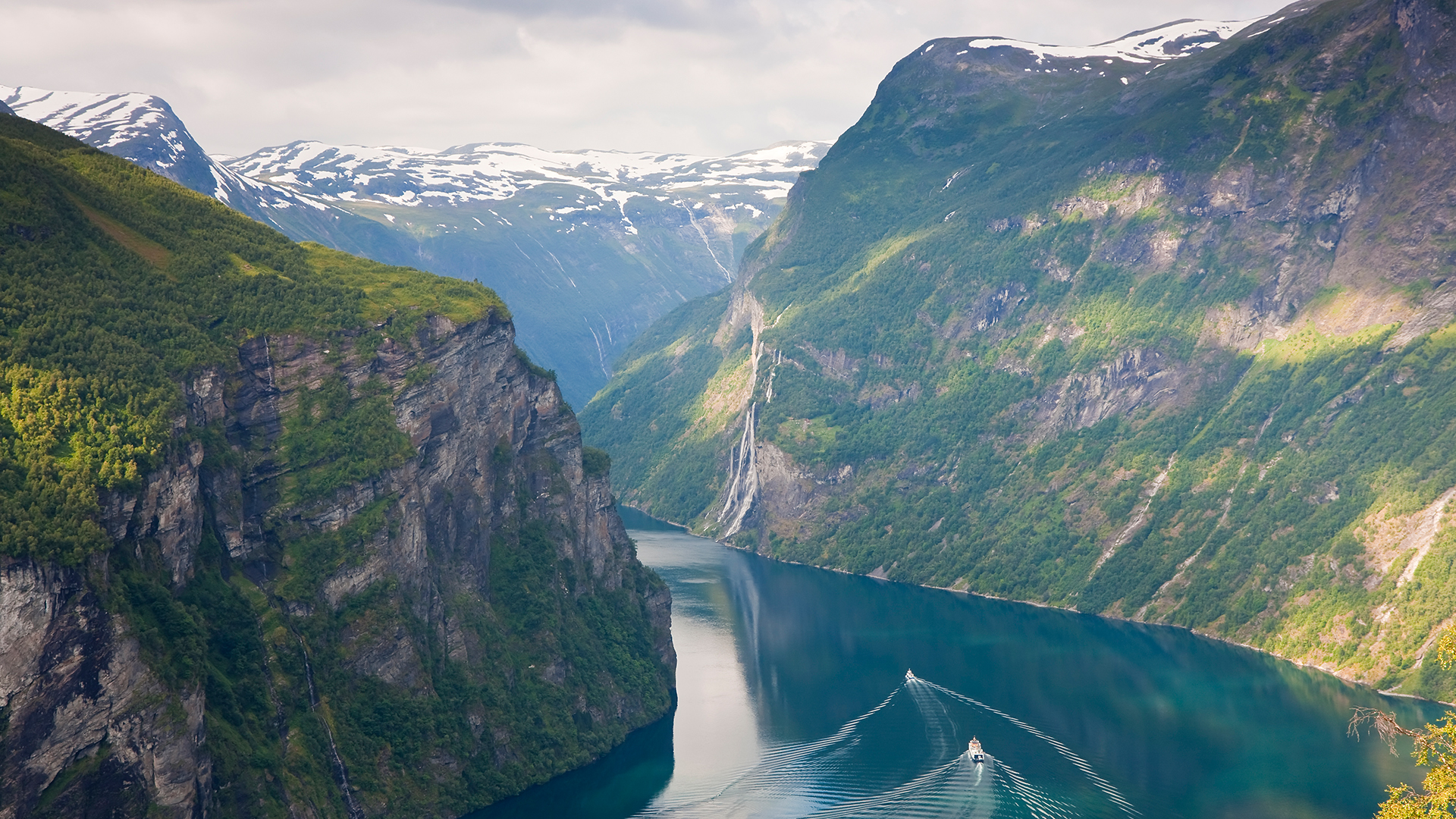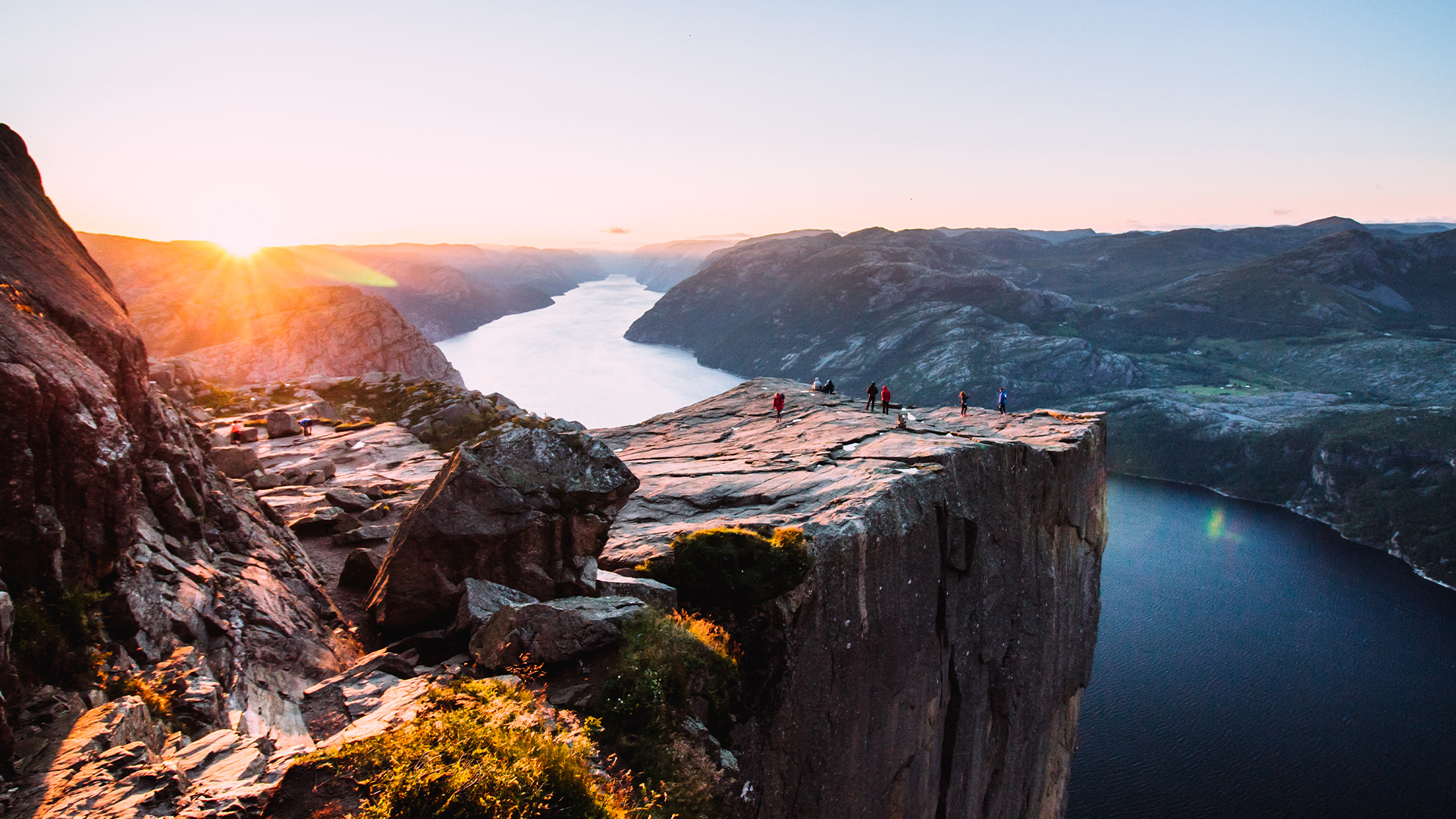
Norway is known for its stunning fjords — long, sinuous coastal inlets with steep sides. It's no wonder that these geological features, which are filled with sparkling water and often lined with rugged cliffs, headline so many tourism ads.
Although fjords are found along coastlines around the world, from Alaska to Scotland to New Zealand, Norway has more than 1,000 that are substantial enough to have names, according to the country's official tourism board. So why are there so many fjords in Norway?
"The fjords are the product of repeated glacial cycles and ice-sheet-scale glaciation," Anna Hughes, a paleoglaciologist at the University of Manchester in the U.K., told Live Science.
Like other places with fjords, Norway's geographic location has put it in the path of many cycles of glaciation since the beginning of the Quaternary period, some 2.6 million years ago. The most recent of these cycles, from roughly 120,000 to 11,700 years ago, is sometimes colloquially referred to as the "ice age," but it's just one of many ice ages.
Related: Which country has the most islands?

Although ice sheets may look static, they're actually quite dynamic. "Ice flows and moves from high points to low points, either through its own internal deformation, or it can also slide with the underlying sediments," Hughes said.
Their movement pulls along rocks underneath, abrading the sediment or bedrock beneath. Over time, they carve U-shaped valleys. When one of these steep-sided valleys forms via a glacier flowing into the ocean, the seawater rushes in as the glacier melts away. This formation is known as a fjord.
It takes many cycles of glaciers advancing and retreating to carve deep fjords like those seen in Norway. "Once the U-shaped valleys are created, they'll be a funnel for ice in future glaciations — they sort of propagate themselves once they exist," Hughes said. So a fjord that begins to form in one glacial cycle will grow in the next one, as ice continues to wear deeper grooves in the same places.
Technically, fjords can form anywhere glaciers have met the ocean. Glacial valleys that don't have a marine outlet become different features — like the Finger Lakes in New York, which have a similar shape, with deep, steep sides, said Jason Briner, a geologist at the University at Buffalo.
But not every coastline that's been glaciated has equal numbers of fjords — or equally striking fjords.
"Where [fjords] are formed relates a lot to the geology that was there before the Quaternary period," Briner told Live Science.
For example, while softer bedrock might seem easier to carve, the underlying bedrock needs to have "structural integrity" to make a fjord with high relief, Briner said. He compares it to cutting a block of cheddar versus a block of crumbly feta: The former holds its shape, while the latter falls apart. The hard igneous bedrock along the Norwegian coast is perfect for forming fjords with high, steep walls.
In other places, like parts of the British Columbia coast, "there are still fjords, but the relief isn't quite as great because the geology that existed there has a different character," Briner added.
Norway's western coastline is also a tectonic-plate boundary, where the continental crust meets ocean floor crust. "Where you get the most spectacular fjords is where the ice sheet flows off the continent into the ocean," Briner said. "That thick continental crust next to the thin oceanic crust creates a situation where ice is pouring off," like stepping down a stair.
Neighboring Sweden has also been heavily glaciated, but it has only a few fjords. For most glacial periods during the past million years, Sweden has been in the middle of an ice sheet, not at the edge. In this part of the ice sheet, the ice wasn't as constrained by topography such as mountains as it flowed, Hughes said. Ice radiated into Finland and Russia, instead of flowing into the ocean and carving fjords.
So while Norway can't lay sole claim to fjords, its ragged, rugged coastline stands as a testament to the power of the glaciers that shaped it.







